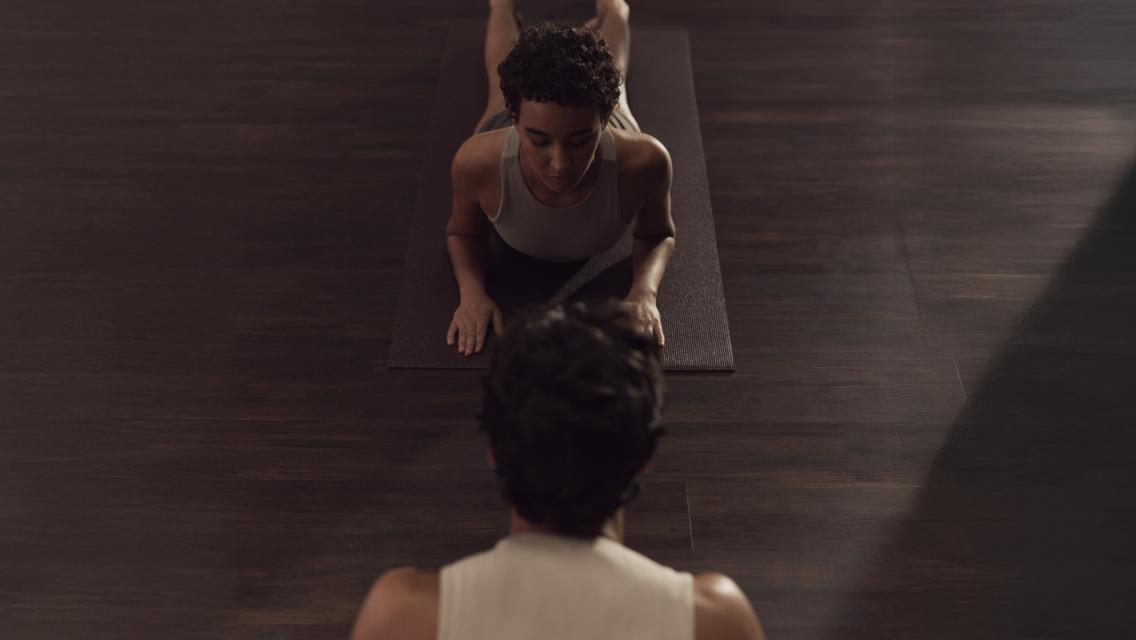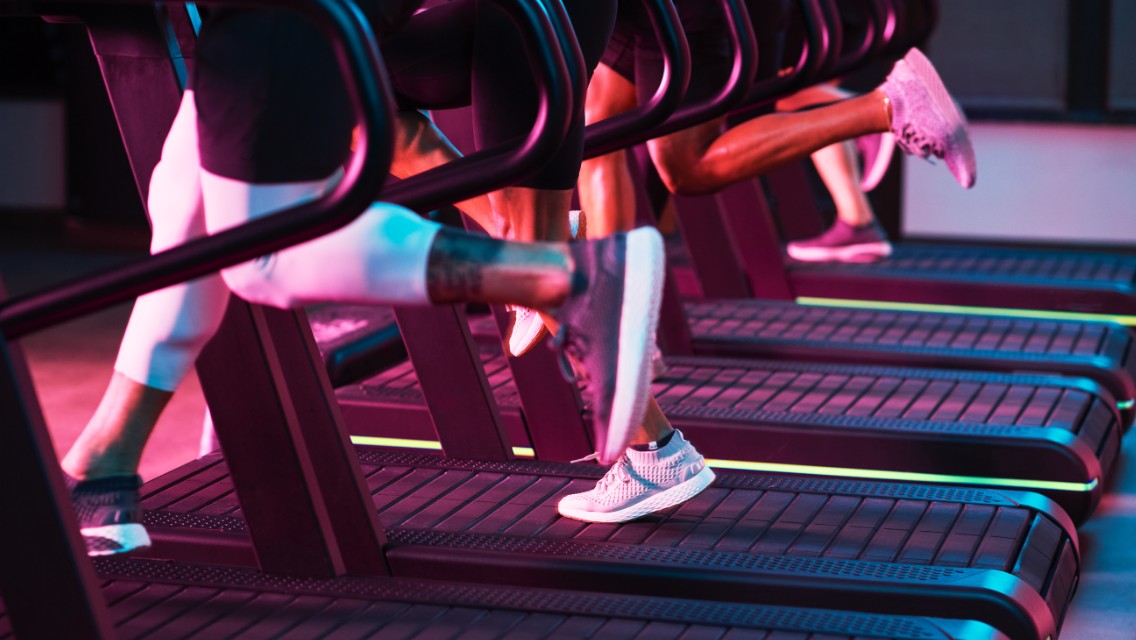Increasing strength and muscular endurance is a common fitness goal thanks to its many benefits for overall health and well-being. But lifting heavy weights isn’t the only activity than can get you to the finish line of your muscle-building goals: Experts also recommend incorporating ample mobility exercises, balance work, and active recovery to create a well-rounded regimen.
If your workout routine is designed around building strength, we rounded up three Life Time classes that can balance your current training endeavors and boost your results.
1. Ultra Fit
Ultra Fit is a high-performance speed and conditioning program that pairs sprint interval training with functional-strength exercises and balance and stability movements to improve your body’s core systems. It features a high-intensity treadmill workout in which you develop your sprinting technique, along with off-the-treadmill resistance, balance, coordination, and agility training.
“Ultra Fit is a great complement to any strength training routine,” says Hayley Akradi, classes operations manager and Ultra Fit coach at Life Time. “You get true muscle endurance work in each part of the class, which can supplement the strength moves you are doing on the workout floor or in other strength-based classes. The sprint interval training takes you into another energy system that helps build the production of HGH — human growth hormone — and testosterone, which can make you leaner and stronger.” (Learn more: “The Science of Sprinting”).
How to work Ultra Fit into your routine:
If your workout routine consists of strength training splits, Akradi recommends adding an Ultra Fit class into the middle.
“For example, I like to fit an Ultra Fit class into a four-day split that incorporates two upper body days and two lower body days,” she explains. “This might look like, day one: lower body; day two: upper body, day three: Ultra Fit; day four: upper body; day five: lower body.”
You can easily bake this into other styles of lifting as well, Akradi says. “Just understand that Ultra Fit is a ‘game day’ workout that asks for your full effort, so place it within your routine where it makes the most sense.”
2. ROOT HATHA Yoga
Yoga has many benefits, including improved flexibility, which can increase your range of motion when strength training. When you repeatedly contract your muscles during a strength-training session, it can also lead to tightness or tension.
“For anyone who strength trains, I suggest adding a ROOT HATHA class to their routine,” says Emma Graves, studio master trainer and Dynamic Personal Trainer at Life Time River North at One Chicago in Illinois. “This format focuses on building a strong yoga foundation and becoming more aware of our bodies and muscles, which in turn can help us move better during strength training.”
How to work ROOT HATHA into your routine:
On active recovery days or whenever your muscles are feeling tight, Graves recommends taking a ROOT HATHA class.
“My goal is to help people choose just one yoga class to add to their weekly routine,” she says. “Yoga isn’t only meant for people who are amazingly flexible and mobile. It’s for anyone who wants to move better, breathe easier, and live healthier. There are no prerequisites. Just show up!”
3. LIFE BARRE
With elements of ballet, Pilates, yoga, and strength training, barre is a low-impact workout style that drives improved muscular endurance and enhanced coordination, among other benefits. Featuring high reps of precise isometric movements, barre classes target and engage your core and other muscles in a way that other strength endeavors can’t.
“One of the main goals of barre workouts is building core strength,” says Lillian Davis, studio leader at Life Time in Mason, Ohio. “This can complement your strength goals in many ways — most importantly, it helps you maintain proper form when performing heavier lifts. Barre is also known for its isometric movements. These movements are done with higher reps, which help increase your muscular endurance. Barre classes also feature dynamic stretching, which allows for a larger range of motion.”
How to work Life Barre into your routine:
If you’re new to barre, Davis suggests trying all four of Life Time’s barre formats at least once.
“Sampling each version allows you to figure out which format you truly like the best,” she says. “Then, adding a barre class once per week — whether you stick with one format or cycle them — can prevent injury, increase your flexibility, and improve your balance, all of which are important when your goal is to build muscle or improve strength.”





